Alberto Giacometti Tête de Diego au col roulé circa 1954 bronze, green-brown patina 12 7/8 x 5 1/8 x 5 5/8 in. (33 x 12.9 x 14.4 cm) Signed and numbered "Alberto Giacometti 4/8" on the back of the base. Inscribed with foundry mark "Susse Fondeur Paris" on the left side of the base; further inscribed with the foundry mark "Susse Fondeur Cire Perdue"on the inside of the base. Designed in 1954, cast in bronze in 1980 by Susse Foundry, Paris. This work is number 4 from an edition of 8 casts. This work is registered in The Alberto and Annette Giacometti Association Database under no. S-2010-13. This work is accompanied by a certificate of authenticity issued by the Comité Giacometti, signed by Véronique Wiesinger and Christian Klemm, which states that the Comité examined the work in June 2010. It is also accompanied by a certificate from the Fondation Alberto et Annette Giacometti, stating that it will be included in the forthcoming catalogue raisonné of the artist's work currently being prepared by the Fondation and is recorded in the Alberto Giacometti Database under no. 1561.
Provenance The Estate of Alberto Giacometti Galerie Maeght Lelong, Paris Hôtel des Ventes d'Enghien, Enghien-les-Bains, France, March 22, 1987, lot 71 Private Collection, France, acquired at the above sale Acquired directly from the above by the present owner, 2001 Literature J. Dupin, Alberto Giacometti Paris: Maeght Editeur, 1962, p. 276 (illustration of original plaster, 1954) Catalogue Essay “All I could do was to make a part which would stand for the whole, and that, moreover, was the way I saw things." Alberto Giacometti Alberto Giacometti created the plaster for the present lot around 1954, modeling the head on his brother, Diego. Here, his younger sibling appears in a turtleneck sweater rolled down on his neck, his distinctively tall forehead, slightly upturned nose, full lips, and intent gaze creating both a sharp profile and powerful frontal visage. Though the depiction of a head is common artistic subject, for Giacometti it functioned as a crucible for innovation, often heralding a new mode of representation in his production. The formal presence of these works is strikingly powerful, especially the series of male heads and busts that the artist created during the 1950s, which have been declared “as famous as they are beautiful,” by Yves Bonnefoy. “These sculpted faces compel one to face them as if one were speaking to the person, meeting his eyes.” (Alberto Giacometti A Biography of his Work, Paris, 1991, p. 432) Heads such as the present lot mark the artist’s transition from the attenuated, weightless figures that had brought him international acclaim in the late 1940s to a renewed investment in observed reality and concrete space without sacrificing expressivity. Accordingly, Giacometti returned to working directly in front of the model, most often sculpting his wife, Annette, or more frequently, Diego. This new studio practice exerted a profound effect on his production. “And this is the point that must be stressed,” Bonnefoy notes, “it is already surprising enough to find an artist at the height of his powers, who in the space of three or four years had sculpted some of the major archetypes of modern art and was immediately recognized as such, practically abandoning this type of creation in order to devote himself to the portraits of a few individuals... During this final period, of almost fifteen years, the heads studies were exclusively Diego, Annette, Annetta [the artist’s mother], and a very few other persons, all close friends, which proves that Giacometti had indeed chosen the existence of individuals, the here and now as the chief object of his new and future study; and he instinctively realized that this object transcended all artistic signs and representations, since it was no less than life itself.” (op. cit., p. 369) Giacometti’s intimate relationship with Diego greatly contributed to the physical and emotional intensity of these heads. Diego was a constant in the artist’s life, a touchstone to which he repeatedly turned for personal and artistic support. Giacometti’s first bust depicts his younger brother, a work in plasticine from 1914 that largely adheres to the classical demands of sculpture. Yet this portrait-like mode of production quickly became a steppingstone to more dramatic heads that nonetheless retain the essential traits of Diego’s identity. When Giacometti gave up his surrealist and abstract manner in 1935, he sculpted Diego’s head obsessively, creating numerous plaster heads as a form of artistic research, a tactile means to contemplate his artistic relationship to objective reality. These earlier heads and the series from the 1950s both eschew traditional cues of human emotion, which are supplanted by the stylistic and often vigorous modeling that imbues the work with vitality. Giacometti acknowledged the long-term effect of his repetitive practice, stating: “Diego’s head is the one I know best. He’s posed for me over a longer period than anyone else. From 1935 to 1940 he posed for
Alberto Giacometti Tête de Diego au col roulé circa 1954 bronze, green-brown patina 12 7/8 x 5 1/8 x 5 5/8 in. (33 x 12.9 x 14.4 cm) Signed and numbered "Alberto Giacometti 4/8" on the back of the base. Inscribed with foundry mark "Susse Fondeur Paris" on the left side of the base; further inscribed with the foundry mark "Susse Fondeur Cire Perdue"on the inside of the base. Designed in 1954, cast in bronze in 1980 by Susse Foundry, Paris. This work is number 4 from an edition of 8 casts. This work is registered in The Alberto and Annette Giacometti Association Database under no. S-2010-13. This work is accompanied by a certificate of authenticity issued by the Comité Giacometti, signed by Véronique Wiesinger and Christian Klemm, which states that the Comité examined the work in June 2010. It is also accompanied by a certificate from the Fondation Alberto et Annette Giacometti, stating that it will be included in the forthcoming catalogue raisonné of the artist's work currently being prepared by the Fondation and is recorded in the Alberto Giacometti Database under no. 1561.
Provenance The Estate of Alberto Giacometti Galerie Maeght Lelong, Paris Hôtel des Ventes d'Enghien, Enghien-les-Bains, France, March 22, 1987, lot 71 Private Collection, France, acquired at the above sale Acquired directly from the above by the present owner, 2001 Literature J. Dupin, Alberto Giacometti Paris: Maeght Editeur, 1962, p. 276 (illustration of original plaster, 1954) Catalogue Essay “All I could do was to make a part which would stand for the whole, and that, moreover, was the way I saw things." Alberto Giacometti Alberto Giacometti created the plaster for the present lot around 1954, modeling the head on his brother, Diego. Here, his younger sibling appears in a turtleneck sweater rolled down on his neck, his distinctively tall forehead, slightly upturned nose, full lips, and intent gaze creating both a sharp profile and powerful frontal visage. Though the depiction of a head is common artistic subject, for Giacometti it functioned as a crucible for innovation, often heralding a new mode of representation in his production. The formal presence of these works is strikingly powerful, especially the series of male heads and busts that the artist created during the 1950s, which have been declared “as famous as they are beautiful,” by Yves Bonnefoy. “These sculpted faces compel one to face them as if one were speaking to the person, meeting his eyes.” (Alberto Giacometti A Biography of his Work, Paris, 1991, p. 432) Heads such as the present lot mark the artist’s transition from the attenuated, weightless figures that had brought him international acclaim in the late 1940s to a renewed investment in observed reality and concrete space without sacrificing expressivity. Accordingly, Giacometti returned to working directly in front of the model, most often sculpting his wife, Annette, or more frequently, Diego. This new studio practice exerted a profound effect on his production. “And this is the point that must be stressed,” Bonnefoy notes, “it is already surprising enough to find an artist at the height of his powers, who in the space of three or four years had sculpted some of the major archetypes of modern art and was immediately recognized as such, practically abandoning this type of creation in order to devote himself to the portraits of a few individuals... During this final period, of almost fifteen years, the heads studies were exclusively Diego, Annette, Annetta [the artist’s mother], and a very few other persons, all close friends, which proves that Giacometti had indeed chosen the existence of individuals, the here and now as the chief object of his new and future study; and he instinctively realized that this object transcended all artistic signs and representations, since it was no less than life itself.” (op. cit., p. 369) Giacometti’s intimate relationship with Diego greatly contributed to the physical and emotional intensity of these heads. Diego was a constant in the artist’s life, a touchstone to which he repeatedly turned for personal and artistic support. Giacometti’s first bust depicts his younger brother, a work in plasticine from 1914 that largely adheres to the classical demands of sculpture. Yet this portrait-like mode of production quickly became a steppingstone to more dramatic heads that nonetheless retain the essential traits of Diego’s identity. When Giacometti gave up his surrealist and abstract manner in 1935, he sculpted Diego’s head obsessively, creating numerous plaster heads as a form of artistic research, a tactile means to contemplate his artistic relationship to objective reality. These earlier heads and the series from the 1950s both eschew traditional cues of human emotion, which are supplanted by the stylistic and often vigorous modeling that imbues the work with vitality. Giacometti acknowledged the long-term effect of his repetitive practice, stating: “Diego’s head is the one I know best. He’s posed for me over a longer period than anyone else. From 1935 to 1940 he posed for
.jpg)
.jpg)

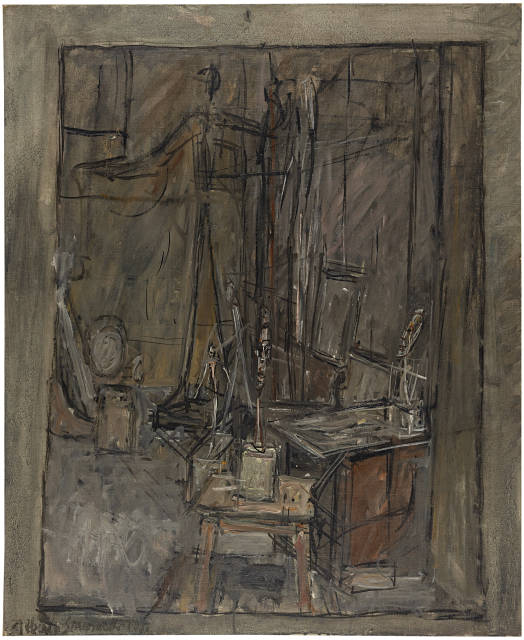
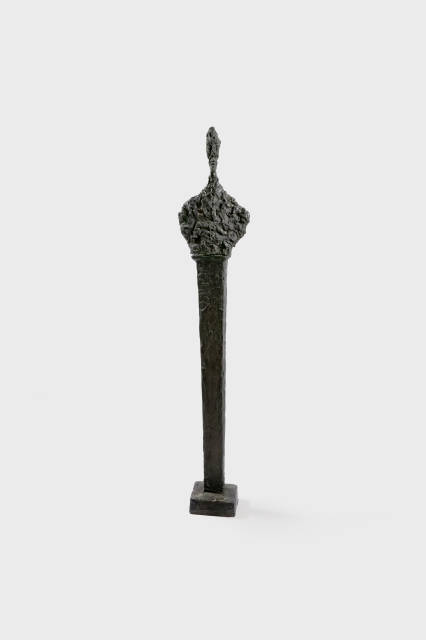
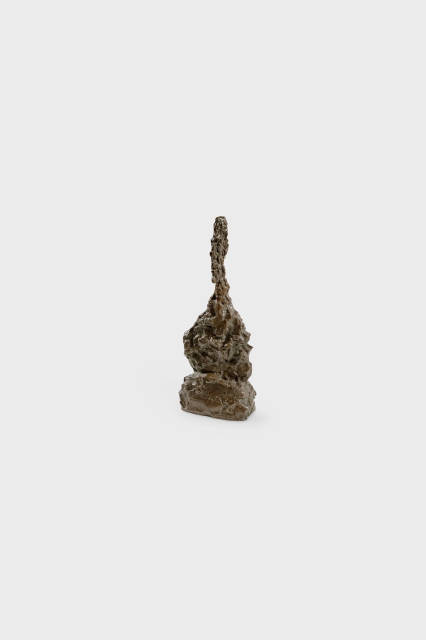
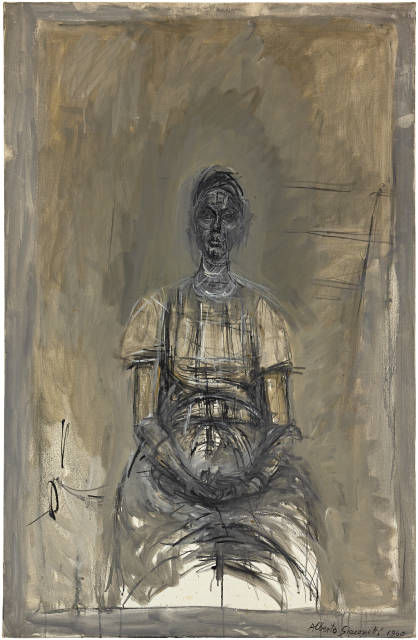

.jpg)
.jpg)


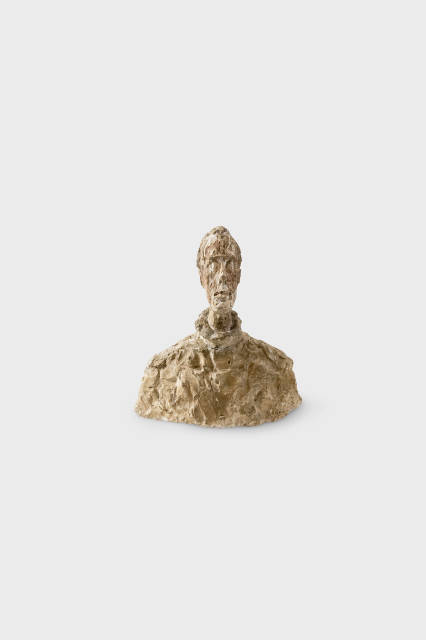


Testen Sie LotSearch und seine Premium-Features 7 Tage - ohne Kosten!
Lassen Sie sich automatisch über neue Objekte in kommenden Auktionen benachrichtigen.
Suchauftrag anlegen